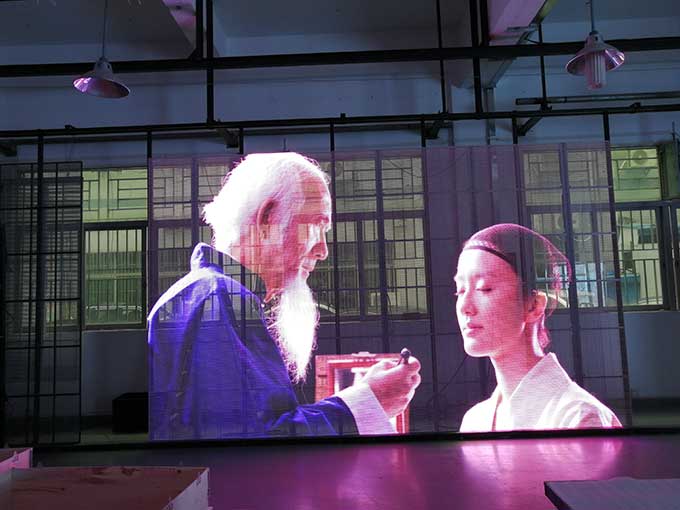LED display screens are increasingly being used in the media industry. Although LED displays can bring certain improvements to the city’s image, advertising forms are also flexible and diverse. However, users need to pay attention to some precautions during the installation of LED display screens in order to ensure the normal operation of the equipment. Therefore, the editor has listed some main precautions for LED display screen installation, which is convenient for DIY installation or supervision of on-site workers.

Precautions for installing transparent LED display screens.
1 LED transparent screens have significant weight advantages compared to outdoor full-color screens, with a single square meter weight of around 12KG. However, if the area is relatively large, the weight of the entire screen is still significant, and the load-bearing capacity at the installation position must be structurally sturdy.
2. Determine the installation position of the LED display screen. At the installation site of the LED display screen, it is determined to install the LED display screen on a certain wall, under the beam, and between the bodies. This is reflected in the drawings, which confirm the column and beam markings on the left and right sides of the screen body on the plan view, and confirm the bottom elevation of the screen body on the vertical view.
3. The connection between the installation surface of transparent LED electronic screens and the installation bracket, as well as between the installation bracket and the equipment, should be firm, stable, and reliable to ensure that the installed equipment does not slip, tilt, or fall.
4. High quality products are required for power sockets. When installing power sockets for users, they should be dedicated sockets with ground wires and fixed, and should be located close to the random power plug of the equipment. The socket structure should match the power plug of the equipment to be installed and comply with the requirements of GB1002.
5. Determine the force point for on-site screen installation. Determine the load-bearing points (surfaces) of the screen body through on-site observation, inquiry with relevant personnel from users, and review of relevant building and civil engineering drawings.
6. Rust prevention measures should be taken well, and metal components must be firmly welded or connected and undergo rust prevention treatment. The materials used must have sufficient rust resistance.
7 Waterproof measures for LED display screens themselves. If the LED display screen is installed outdoors, it must be exposed to sunlight, rain, wind and dust, and the working environment is harsh. Electronic devices that are wet or severely damp can cause short circuit faults or even fires, resulting in losses. Therefore, during installation, The interface between the LED display screen and the building must be strictly waterproof and leak proof, and the screen body must have good drainage measures to ensure smooth drainage in case of water accumulation.
8. Lightning protection devices need to be installed on display screens and buildings. The main body and casing of the display screen should be well grounded, and the grounding resistance should generally be ≤ 4 Ω, which can timely discharge the large current caused by lightning.
9 LED display screens generate a certain amount of heat during operation. If the ambient temperature is too high and the heat dissipation is poor, the integrated circuit may not work properly, or even be burned out, causing the LED display screen to malfunction. Therefore, LED display screens should be equipped with ventilation and cooling equipment to maintain the internal temperature of the screen at -10~40C.
The installation of LED display screens is related to the quality of LED display screen usage, visual sinking effect, post maintenance, and usage safety. During the installation process, do not be careless to avoid unnecessary losses.
